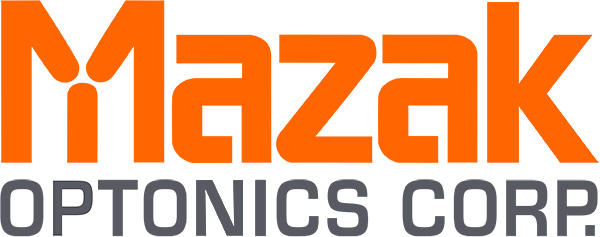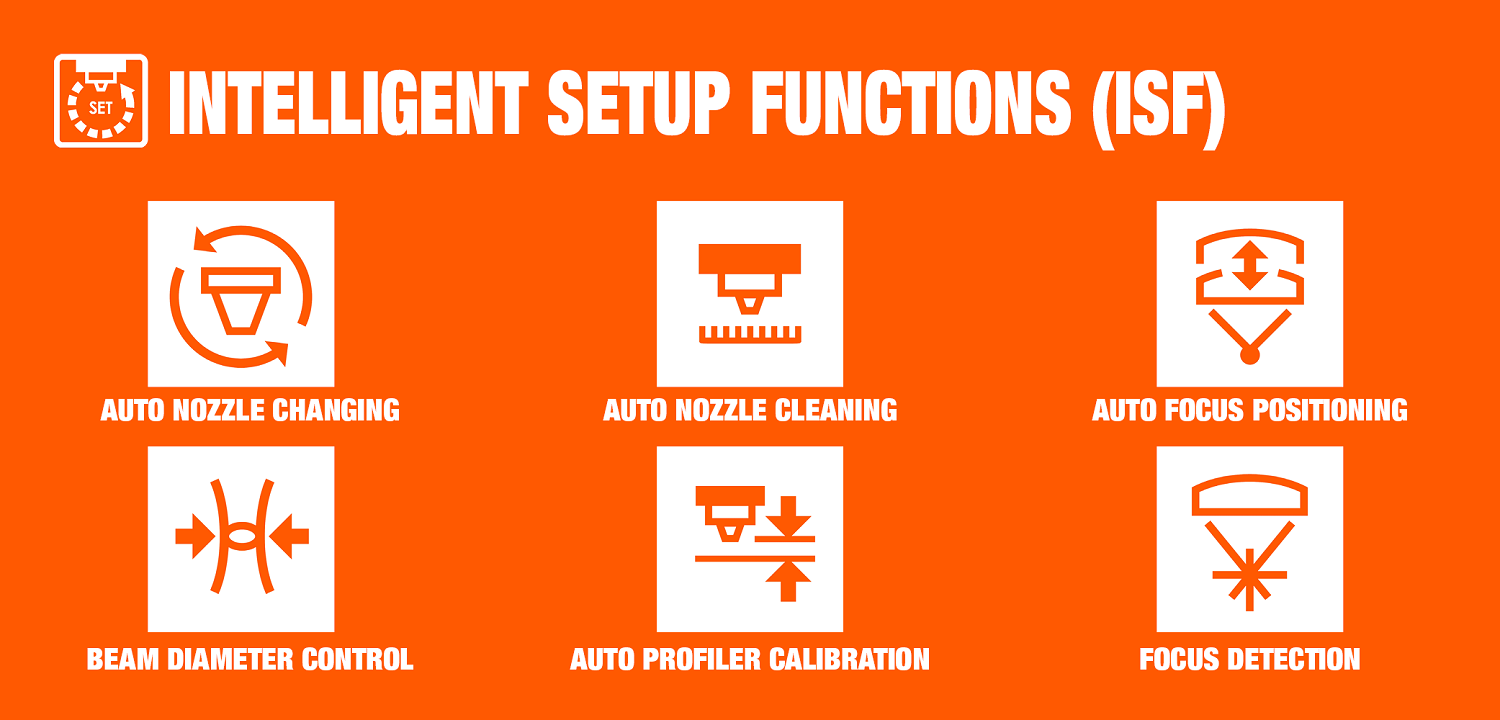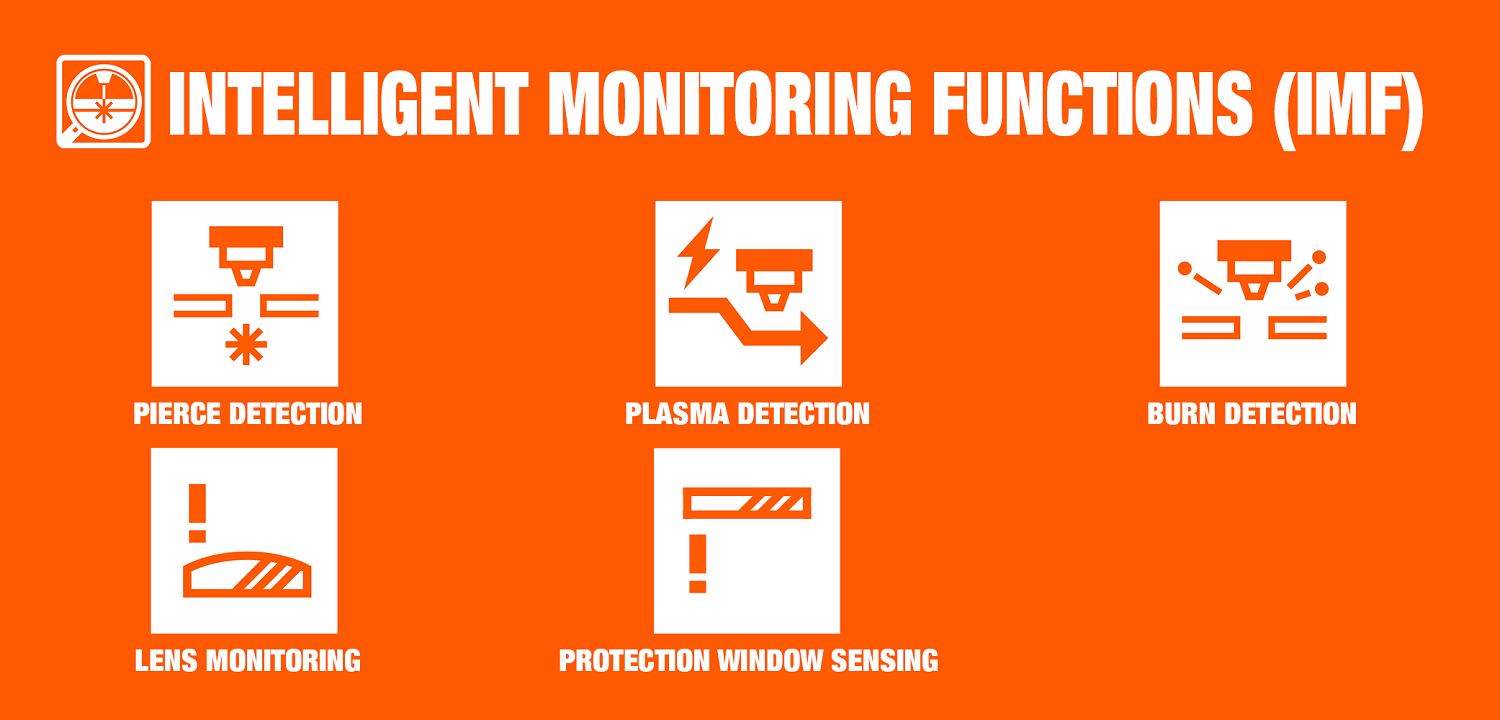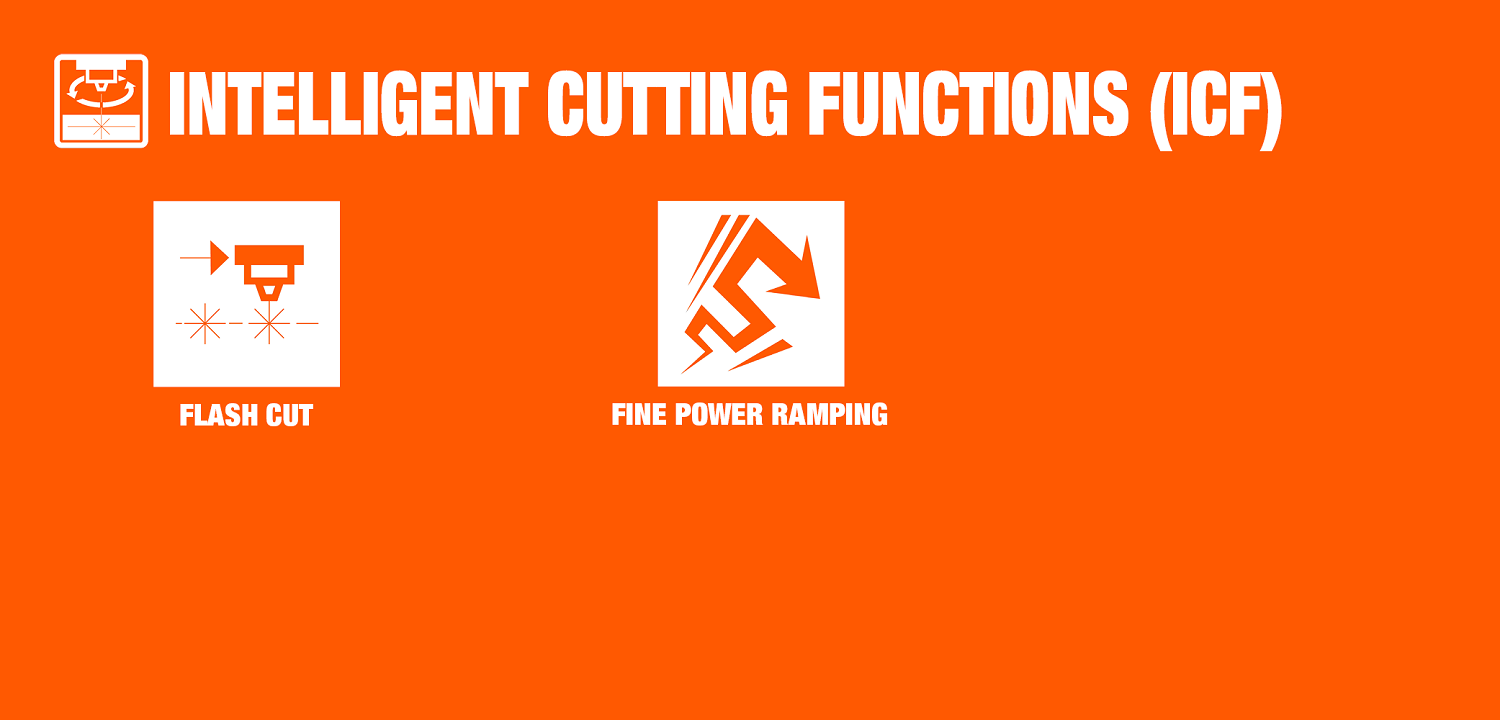Discover more about Mazak’s Intelligent Functions: Intelligent Setup Functions, Intelligent Monitoring Functions and Intelligent Cutting Functions
By Mitch Irish, Applications Engineer at Mazak Optonics Corp.

Mazak Optonics utilizes intelligent technology to engineer laser-cutting machines that deliver innovation, performance, automation and value. These automated innovations are called the Mazak Intelligent Functions.
Mazak’s Multi-Control Torch utilizes a variety of unique technologies that incorporate the expertise of experienced machine operators that offer unsurpassed productivity and higher accuracy.
When the Intelligent Functions are paired with the Mazak Multi-Control Torch, they work together to provide unrivaled operator support for exceptional ease of operation, offer enhanced quality of processed components as well as reduced cutting time.
Laser automation is important for both machine operators and shop floor managers. An optimized laser machine utilizing the Intelligent Functions has improved throughput, reduced rework, reduced assist gas consumption and improves the bottom line.
There are three categories of Mazak’s Intelligent Functions which include: Intelligent Setup Functions (ISF), Intelligent Monitoring Functions (IMF) and Intelligent Cutting Functions (ICF).
Intelligent Setup Functions (ISF)
The Intelligent Setup Functions (ISF) are a variety of functions which improve the ease of operation and reduce the laser’s setup time. The ISF are designed to automatically perform the laser machine setup by changing and cleaning the nozzle, detecting the focus and changing the focus position, adjusting the beam diameter and positioning the space between the material and the nozzle.
Auto Nozzle Changing

The first ISF is Auto Nozzle Changing. This setup function automatically changes to the optimum nozzle for continuous automatic operation. This is performed by replacing the nozzle by indexing its changer according to the specified diameters and types in reference to the cut conditions data registered in the CNC.
Benefits:
By having the machine automatically adjust and know exactly which nozzle should be used gives less room for human error. Also, by having the optimal nozzle being used reduces the amount of assist gas used and results in optimum cutting..
Auto Nozzle Cleaning

The next ISF is Auto Nozzle Cleaning. The machine’s cutting head moves to the nozzle cleaning brush where the brush removes spatter that has adhered to the nozzle. This is performed anytime there is a nozzle change and before the nozzle is put away. Nozzle cleaning can also be performed after a designated number of pierces. This is often recommended when cutting with plastic film, galvanized material, or piercing aluminum to ensure proper gap and cut quality.
Benefits:
The combination of the Auto Nozzle Changing and the Auto Nozzle Cleaning functions reduces the laser setup time. When nozzle changing and nozzle cleaning is performed by an operator, it can take up to 60 minutes. With the Auto Nozzle Cleaning and Auto Nozzle Changing features, that setup time is reduced to just one minute.
Auto Focus Positioning

Many Mazak laser-cutting machines utilize Auto Focus Positioning. The machine automatically performs this function by adjusting the position of the beam diameter adjustment lens. As a result, the focal position can be situated for the optimal piercing performance and then, on the fly, it is adjusted for cutting operation which maximizes productivity.
Benefits:
By automating the focus position, it allows for faster piercing and faster cutting since there is no adjustment needed when switching from one process to the other, and throughout cutting operations. The total length of non-cutting axis movements is drastically reduced for each worksheet.
Focus Detection

Traditionally, focus distance measurement and adjustment required considerable setup time as well as a skilled and experienced operator. But now, Mazak CO2 laser machines can detect the focal length through the IMF sensor. The Focus Detection function automatically detects the focal point of a lens. The focal point detected by this function is used in lens positioning. This function carries out a focus detection for the currently mounted torch.
Benefits:
By automating the lens focusing process, it allows for less knowledgeable operators to be able to run the machine. This function is only used with CO2 laser machines.
Beam Diameter Control

The Beam Diameter Control ISF is designed to change the beam diameter by moving the lens. Moving the lens up or down, the laser beam diameter can be changed automatically. By adjusting the spot size of the beam, it gives a small more centralized shape, or it can give a wider more dispersed shape.
With the centralized, pin-point beam diameter, it gives the most heat to a direct location. That pin-point penetration is often used for piercing and cutting thin worksheets. The wide beam shape reduces the kerf on thicker materials
Benefits:
Beam Diameter Control results in improved cutting speed for thin worksheets and increased cutting performance for thick sheets.
Auto Profiler Calibration

When using a new nozzle, the space between the material and the nozzle must be properly maintained. This is achieved automatically through Auto Profiler Calibration all in just a matter of seconds. This is important for gas distribution but also when the gap moves, the focus also moves, it is based off the tip of the nozzle.
Benefits:
With the machine automatically adjusting to give the proper nozzle to material gap, the cutting distance position is maintained for dross free cutting. This automatic calibration maximizes the time between necessary operator invention. Proper focus to the material and gas distribution
Intelligent Monitoring Functions (IMF)
The Mazak Multi-Control Torch (MCT) cutting head has sensors that monitor piercing and cutting operations to improve throughput and part quality. This is performed by the machine by monitoring the cutting conditions so when a defect is detected, the operation is corrected or paused to realize optimum cutting.
Pierce Detection

Pierce Detection senses when the pierce breaks through the material and then stops piercing so that it can start cutting, as compared to a programmed pierce which would include added time to account for variations in the process. In the standard machining conditions the piercing dwell time is usually set to have a margin. The excess time can be skipped by this function when piercing has been completed before the expiration of the programmed dwell time.
For example, if the programmed pierce is 15 seconds long but it is complete in 5 seconds, instead of wasting time and continuing to pierce, the machine will skip the rest of the pierce and go to the cutting process.
Benefits:
The Pierce Detection process reduces piercing time, most notably in mid-range to thick plate worksheets. An example of this is a 5x10 worksheet of 0.60” mild steel using oxygen. The nest has 375 pierces. The combination of Pierce Detection and Auto Focus Positioning dramatically reduced the piercing time by almost 80 percent. This also reduced the overall cycle time for the next by almost 40 percent.
Plasma Detection

Plasma generated when cutting mid-range to thick plate stainless steel, aluminum, brass or mild steel with nitrogen can result in cutting failure that stops machine operation. Plasma Detection monitors plasma generation during the cutting process and makes automatic corrective adjustments to stabilize optimal conditions for consistent cut quality.
If, however, the corrective measures cannot produce improvement in processing within a predetermined period of time, the machine will enter either the feed hold state with an alarm displayed on the screen, or the tracing retrial mode.
Benefits:
With Plasma Detection, it reduces machining defects at acute corners or in a section of complicated geometry. It also reduces machining defects after piercing and it reduces machining defects after a tracing retry.
Burn Detection

When processing mid-range to thick plate mild steel or copper worksheets using oxygen, burning can occur which results in cutting failure. Burn Detection monitors for abnormal burning during laser processing and automatically stops cutting, if any is detected.
Benefits:
Burn Detection helps detect machining defects and reduce material waste when using oxygen as an assist gas for mid-range to thick plate mild steel.
Lens Monitoring

With CO2 laser-cutting machines, if the focus lens has dust on it when cutting, that could possibly ignite and damage the lens. The Lens Monitoring IMF monitors the condition of the focus lens and if any problem is detected, cutting will automatically stop. During cutting operations, this function always keeps watch on the upper surface of the lens.
Benefits:
When particulate is detected on the focus lens, the Lens Monitoring function prevents any damage to happen to the lens by stopping the emission of the laser beam. By doing so, it minimizes the risk of burning the lens ad the mirror in the external optical path.
Protection Window Sensing

The last IMF is Protection Window Sensing which is a laser heat sensor that detects an abnormal rise in the temperature of the protective window in order to protect the cutting-head. If spatter is produced during the cutting process and adheres to the protective window in the cutting-head, an abnormal temperature rise will be detected by the sensor, an alarm will be raised, and the emission of a laser beam will be stopped. If the alarm is raised, the protective window may need to be cleaned or changed.
Benefits:
By utilizing the Protection Window Sensing feature it will prevent damage from occurring to the window. This also assists in monitoring window health and detecting if there are spots in the window without needing to regularly open the cutting-head to check.
Intelligent Cutting Functions (ICF)
The Intelligent Cutting Functions (ICF) are strategies that can be implemented to improve part quality and processing efficiency.
Flash Cut

Flash Cut is a cutting method that is performed by synchronizing the axis movement and turning the laser on and off while keeping the nozzle down. This cutting feature can be used to cut grids, or it can cut in line with another on thin sheet metal to avoid changing directions and then it moves, accelerate and decelerate to cut that.
Instead of cutting each feature (square, hexagon, etc.) individually one at a time, we can process all the lines in one orientation in succession by quickly turning the beam on and off. We can then repeat this until all our features are cut. For squares, rectangle, and diamonds this will be 2 passes total; for hexagons it will be 3 passes.
Benefits:
Flash Cutting can be used to process patterns much more efficiently. Any time there is a pattern where straight lines line up, Flash Cutting can be used. This results in greatly reduced processing time while still maintaining cut quality and accuracy.
Fine Power Ramping

The Fine Power Ramping ICF automatically controls laser output and feedrate to offer optimal cutting conditions used for high-speed straight and corner cutting to prevent dross. As the machine goes into a corner or the end of a geometry, the feedrate will drop, finely tune the power frequency and duty, power matches the acceleration and deceleration to allow for it to not burn the corners.
Benefits:
By utilizing the ICF Fine Power Ramping, it can achieve high accuracy and optimal efficiency when cutting sharp corners, holes and other small features.
To discover more about power ramping features, visit this tech tips post.
These exclusively engineered setup, monitoring and cutting features are to improve non-processing time, improve machine reliability, and achieve high performance cutting on Mazak laser machines.



